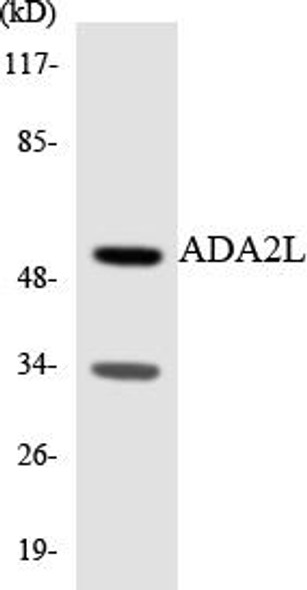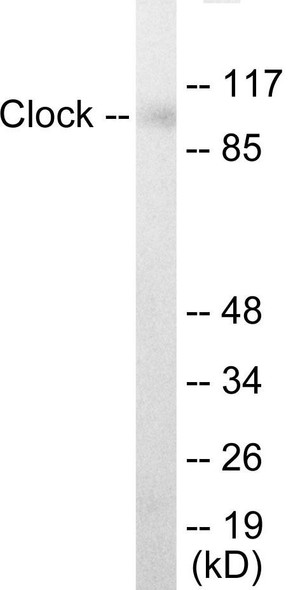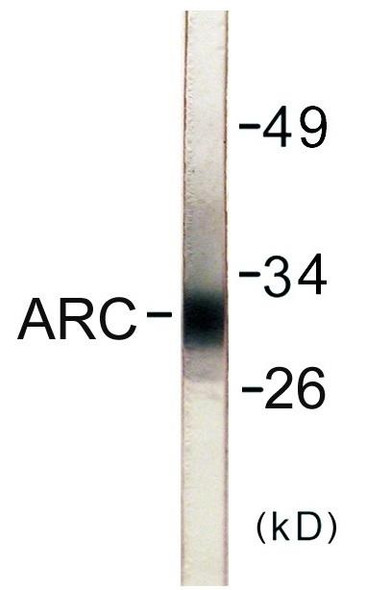Description
TNF12 Colorimetric Cell-Based ELISA
The TNF-α (Tumor Necrosis Factor Alpha) Colorimetric Cell-Based ELISA Kit from AssayGenie is a cutting-edge tool for detecting and quantifying TNF-α levels in cell cultures. This kit provides high sensitivity and specificity, allowing for accurate and consistent results in a wide range of research applications.TNF-α is a key cytokine involved in inflammation, immune response, and cell death regulation. Dysregulation of TNF-α has been linked to various diseases, including autoimmune disorders, cancer, and infectious diseases.
By accurately measuring TNF-α levels in cell cultures, researchers can gain valuable insights into disease mechanisms and develop innovative therapeutic strategies.The AssayGenie TNF-α Colorimetric Cell-Based ELISA Kit is a reliable and easy-to-use solution for studying TNF-α biology in diverse research settings. Trust AssayGenie for high-quality research tools that deliver accurate and reproducible results.
| Product Name: | TNF12 Colorimetric Cell-Based ELISA |
| Product Code: | CBCAB00934 |
| ELISA Type: | Cell-Based |
| Target: | TNF12 |
| Reactivity: | Human, Mouse |
| Dynamic Range: | > 5000 Cells |
| Detection Method: | Colorimetric 450 nmStorage/Stability:4°C/6 Months |
| Format: | 96-Well Microplate |
The TNF12 Colorimetric Cell-Based ELISA Kit is a convenient, lysate-free, high throughput and sensitive assay kit that can detect TNF12 protein expression profile in cells. The kit can be used for measuring the relative amounts of TNF12 in cultured cells as well as screening for the effects that various treatments, inhibitors (ie siRNA or chemicals), or activators have on TNF12.
Qualitative determination of TNF12 concentration is achieved by an indirect ELISA format. In essence, TNF12 is captured by TNF12-specific primary antibodies while the HRP-conjugated secondary antibodies bind the Fc region of the primary antibody. Through this binding, the HRP enzyme conjugated to the secondary antibody can catalyze a colorimetric reaction upon substrate addition. Due to the qualitative nature of the Cell-Based ELISA, multiple normalization methods are needed:
| 1. | A monoclonal antibody specific for human GAPDH is included to serve as an internal positive control in normalizing the target absorbance values. |
| 2. | Following the colorimetric measurement of HRP activity via substrate addition, the Crystal Violet whole-cell staining method may be used to determine cell density. After staining, the results can be analysed by normalizing the absorbance values to cell amounts, by which the plating difference can be adjusted. |
| Database Information: | Gene ID: 8742, UniProt ID: O43508, OMIM: 602695, Unigene: Hs.54673 |
| Gene Symbol: | TNFSF12 |
| Sub Type: | None |
| UniProt Protein Function: | TNFSF12: Binds to FN14 and possibly also to TNRFSF12/APO3. Weak inducer of apoptosis in some cell types. Mediates NF-kappa-B activation. Promotes angiogenesis and the proliferation of endothelial cells. Also involved in induction of inflammatory cytokines. Homotrimer (Potential). Interacts with the angiogenic factor AGGF1/VG5Q. Highly expressed in adult heart, pancreas, skeletal muscle, brain, colon, small intestine, lung, ovary, prostate, spleen, lymph node, appendix and peripheral blood lymphocytes. Low expression in kidney, testis, liver, placenta, thymus and bone marrow. Also detected in fetal kidney, liver, lung and brain. Belongs to the tumor necrosis factor family. |
| UniProt Protein Details: | Protein type:Apoptosis; Membrane protein, integral; Motility/polarity/chemotaxis; Cytokine Chromosomal Location of Human Ortholog: 17p13 Cellular Component: extracellular space; perinuclear region of cytoplasm; integral to plasma membrane Molecular Function:protein binding; cytokine activity; tumor necrosis factor receptor binding; receptor binding Biological Process: positive regulation of angiogenesis; apoptosis; positive regulation of protein catabolic process; endothelial cell migration; immune response; positive regulation of endothelial cell proliferation; angiogenesis; cell differentiation; signal transduction |
| NCBI Summary: | This gene encodes a member of the tumor necrosis factor superfamily. It encodes a hybrid protein composed of the cytoplasmic and transmembrane domains of family member 12 fused to the C-terminal domain of family member 13. The hybrid protein is membrane anchored and presents the receptor-binding domain of family member 13 at the cell surface. It stimulates cycling in T- and B-lymphoma cell lines. [provided by RefSeq, Jul 2008] |
| UniProt Code: | O43508 |
| NCBI GenInfo Identifier: | 21362987 |
| NCBI Gene ID: | 407977 |
| NCBI Accession: | O43508.1 |
| UniProt Secondary Accession: | O43508,Q8IZK7, Q8WUZ7, |
| Molecular Weight: | 36,589 Da |
| NCBI Full Name: | Tumor necrosis factor ligand superfamily member 12 |
| NCBI Synonym Full Names: | TNFSF12-TNFSF13 readthrough |
| NCBI Official Symbol: | TNFSF12-TNFSF13 |
| NCBI Official Synonym Symbols: | TWE-PRIL |
| NCBI Protein Information: | TNFSF12-TNFSF13 protein; tumor necrosis factor (ligand) superfamily, member 12-member 13 |
| UniProt Protein Name: | Tumor necrosis factor ligand superfamily member 12 |
| UniProt Synonym Protein Names: | APO3 ligand; TNF-related weak inducer of apoptosis; TWEAK |
| UniProt Gene Name: | TNFSF12 |
| UniProt Entry Name: | TNF12_HUMAN |
| Component | Quantity |
| 96-Well Cell Culture Clear-Bottom Microplate | 2 plates |
| 10X TBS | 24 mL |
| Quenching Buffer | 24 mL |
| Blocking Buffer | 50 mL |
| 15X Wash Buffer | 50 mL |
| Primary Antibody Diluent | 12 mL |
| 100x Anti-Phospho Target Antibody | 60 µL |
| 100x Anti-Target Antibody | 60 µL |
| Anti-GAPDH Antibody | 60 µL |
| HRP-Conjugated Anti-Rabbit IgG Antibody | 12 mL |
| HRP-Conjugated Anti-Mouse IgG Antibody | 12 mL |
| SDS Solution | 12 mL |
| Stop Solution | 24 mL |
| Ready-to-Use Substrate | 12 mL |
| Crystal Violet Solution | 12 mL |
| Adhesive Plate Seals | 2 seals |
The following materials and/or equipment are NOT provided in this kit but are necessary to successfully conduct the experiment:
- Microplate reader able to measure absorbance at 450 nm and/or 595 nm for Crystal Violet Cell Staining (Optional)
- Micropipettes with capability of measuring volumes ranging from 1 µL to 1 ml
- 37% formaldehyde (Sigma Cat# F-8775) or formaldehyde from other sources
- Squirt bottle, manifold dispenser, multichannel pipette reservoir or automated microplate washer
- Graph paper or computer software capable of generating or displaying logarithmic functions
- Absorbent papers or vacuum aspirator
- Test tubes or microfuge tubes capable of storing ≥1 ml
- Poly-L-Lysine (Sigma Cat# P4832 for suspension cells)
- Orbital shaker (optional)
- Deionized or sterile water
*Note: Protocols are specific to each batch/lot. For the correct instructions please follow the protocol included in your kit.
| Step | Procedure |
| 1. | Seed 200 µL of 20,000 adherent cells in culture medium in each well of a 96-well plate. The plates included in the kit are sterile and treated for cell culture. For suspension cells and loosely attached cells, coat the plates with 100 µL of 10 µg/ml Poly-L-Lysine (not included) to each well of a 96-well plate for 30 minutes at 37°C prior to adding cells. |
| 2. | Incubate the cells for overnight at 37°C, 5% CO2. |
| 3. | Treat the cells as desired. |
| 4. | Remove the cell culture medium and rinse with 200 µL of 1x TBS, twice. |
| 5. | Fix the cells by incubating with 100 µL of Fixing Solution for 20 minutes at room temperature. The 4% formaldehyde is used for adherent cells and 8% formaldehyde is used for suspension cells and loosely attached cells. |
| 6. | Remove the Fixing Solution and wash the plate 3 times with 200 µL 1x Wash Buffer for five minutes each time with gentle shaking on the orbital shaker. The plate can be stored at 4°C for a week. |
| 7. | Add 100 µL of Quenching Buffer and incubate for 20 minutes at room temperature. |
| 8. | Wash the plate 3 times with 1x Wash Buffer for 5 minutes each time. |
| 9. | Add 200 µL of Blocking Buffer and incubate for 1 hour at room temperature. |
| 10. | Wash 3 times with 200 µL of 1x Wash Buffer for 5 minutes each time. |
| 11. | Add 50 µL of 1x primary antibodies (Anti-TNF12 Antibody and/or Anti-GAPDH Antibody) to the corresponding wells, cover with Parafilm and incubate for 16 hours (overnight) at 4°C. If the target expression is known to be high, incubate for 2 hours at room temperature. |
| 12. | Wash 3 times with 200 µL of 1x Wash Buffer for 5 minutes each time. |
| 13. | Add 50 µL of 1x secondary antibodies (HRP-Conjugated AntiRabbit IgG Antibody or HRP-Conjugated Anti-Mouse IgG Antibody) to corresponding wells and incubate for 1.5 hours at room temperature. |
| 14. | Wash 3 times with 200 µL of 1x Wash Buffer for 5 minutes each time. |
| 15. | Add 50 µL of Ready-to-Use Substrate to each well and incubate for 30 minutes at room temperature in the dark. |
| 16. | Add 50 µL of Stop Solution to each well and read OD at 450 nm immediately using the microplate reader. |
(Additional Crystal Violet staining may be performed if desired – details of this may be found in the kit technical manual.)






